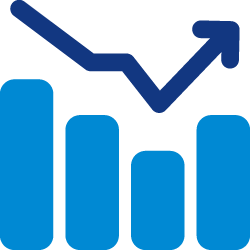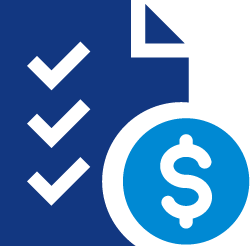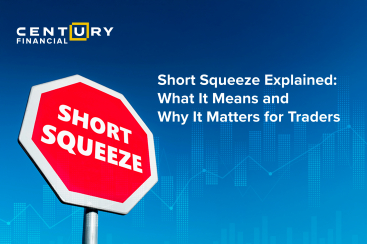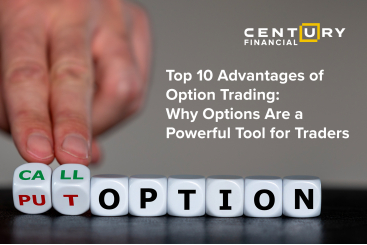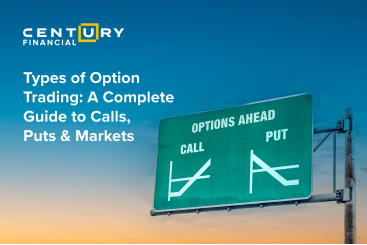Friday, November 07, 2025
What is Option Trading: Definition, Types & Best Platforms
تم إعداد هذا المنشور من قبل سنشري للاستشارات
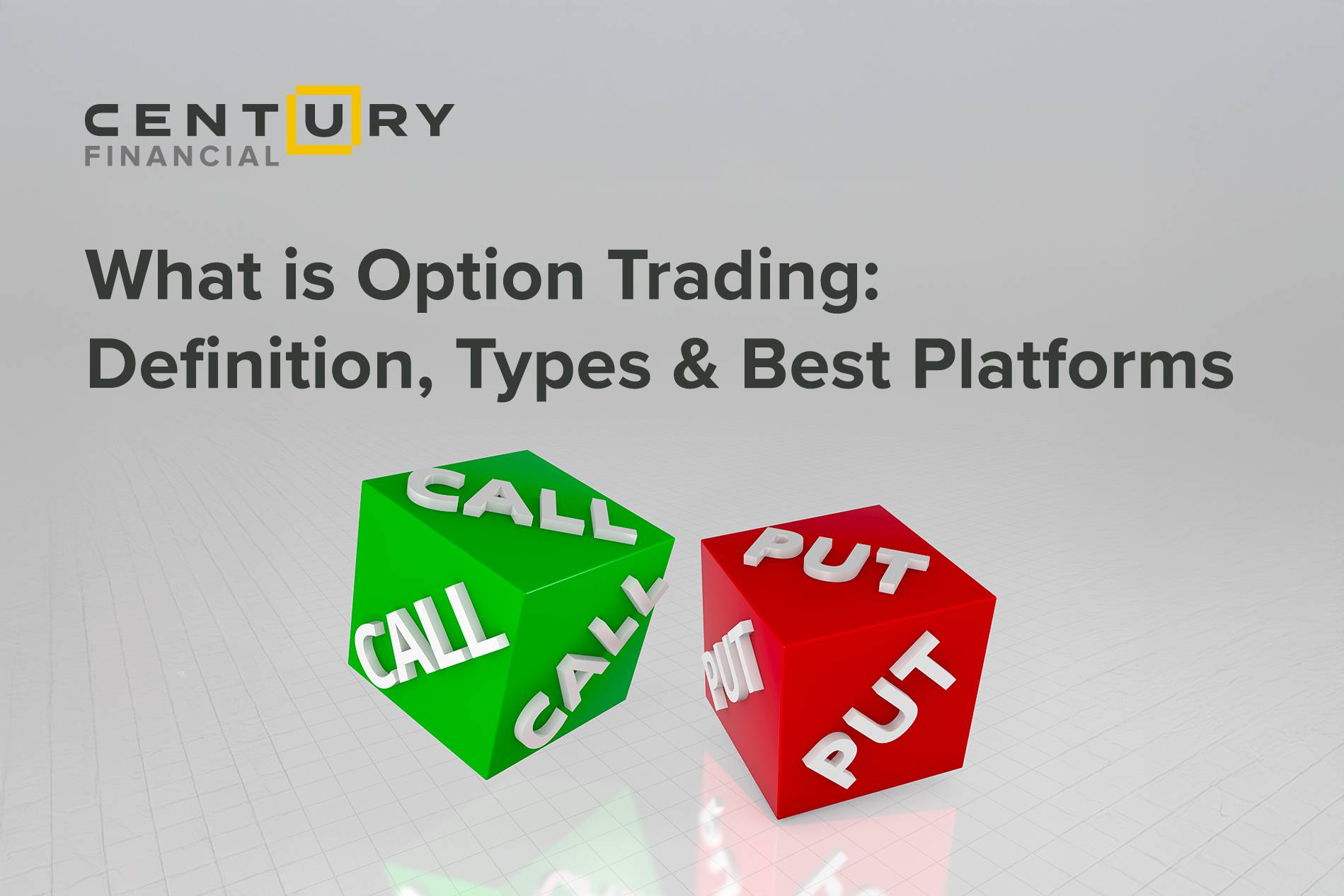

Introduction to Option Trading
Before getting into option trading, we need to understand what a derivative is. In the financial markets, derivatives are financial instruments that derive their value from their underlying assets. Translation: the price of the derivative instruments is based on the asset it is engineered around. Gold derivatives are based on gold, stock futures and options to track that stock.
Options are a derivative instrument where the trader gets the right but not the obligation to buy or sell the contract. Based on one’s outlook, they can buy or sell an option to contract and capitalize through gains or premiums.
Option trading for beginners can be a complex activity, so let’s familiarize ourselves with what options trading is about.
Why Do Traders Choose Options?
Option trading offers several strategic advantages. Following are some of the advantages of trading options:
Heightened exposure due to leverage

Tool for hedging portfolio risks

Strategic combinations and covers

Flexibility thanks to lower capital requirement

How Option Trading Works
With option trading, you basically make a deal to buy or sell something at a fixed (strike) price on or before a certain date. Option contracts come with expiries, and as they inch closer to that date, their time value can decrease, and this phenomenon is termed “theta” or “time decay.” These contracts also have a heightened sensitivity to market volatility. To curb some of this risk, traders use strategies like strangles and spreads to reduce their overall risk.
With a comprehensive understanding of this market and the right trading strategies, you will be better equipped to enter this market.
Types of Options
Outlook (Call vs Put)
Options can be classified based on market outlook, primarily into calls and puts. With the call option, your outlook on the market is bullish, and if you choose the put, you’re bearish. The trader who buys an option pays a premium, which they stand to lose if the market doesn’t go their way. On the other hand, the seller of a contract gains through premiums, making their losses potentially unlimited. Calls are in-the-money when the spot price exceeds the strike, while puts become profitable when prices fall below the strike.

Underlying Asset
Options puts and calls—all derive their value from an underlying asset, which can be stocks, indices, commodities, or currencies. Stock options are the most popular options as they allow you to trade in individual companies without owning their shares. Index and commodities allow you to diversify your portfolio in one go, even hedge against cyclical market turns. For traders, risks are amplified here as these contracts have their own supply-demand-based price changes, while being sensitive to changes in their underlying.

Exercise (American vs European)
We keep speaking about “right but not the obligation” when speaking about options. The “right” in question is whether you can exercise the contract, or basically, act on the contract and receive the underlying asset or a cash settlement before expiry. With American contracts, the buyer can exercise their position at any time before expiry. European contracts lack that flexibility, as one can exercise them only on the day of expiry of the contract. This should have a bearing on your option trading strategies.

Option Trading for Beginners
Getting started with option trading requires an understanding of how options work and how they fit into broader trading strategies. Here are some points you should consider as you start trading in options:
Common Option Trading Strategies
As mentioned before, in option trading, you use call when you have a bullish outlook, whereas put options are for a bearish outlook. When you go long on options, you are hopeful the market follows that trend. For example, when you buy a call, you can capitalize if the spot prices rise above the strike.
With this strategy, you can generate short-term income. You can either sell stock (which you have in your portfolio) or an index call. You will earn the premium as a seller of the contract. If the stock/index remains rangebound, you will profit, but not if it rallies.
Option trading for beginners need not be just about trading. Protective put is essentially insurance for your portfolio. When the market seems bearish, you can buy a put. So, if the market falls, causing losses in your portfolio, your put position can help you offset the losses.
These are volatility-focused strategies that take risks of Options trading into account. Here you will buy both calls and puts. Some of these strategies come in handy when market movements are unpredictable. With proper positioning, you can capitalize on volatility, no matter where the market moves.
Spreads merge two or more option positions to reduce cost or risk. They can be bullish or bearish. In a bull-call spread, for example, you will buy one call at a lower strike and sell another at a higher strike price. In this strategy of option trading, both profits and risks are capped to a certain extent.
Key Participants in Options Trading
Option trading attracts several types of individuals and investors. Some include:

Retail Traders:
Individuals trading options for income generation, hedging, etc.

Institutional Investors:
Mutual funds, pension funds, and insurance companies managing large portfolios.

Market Makers:
Liquidity providers who hold numerous positions to profit from spreads

Hedge Funds:
Aggressively uses options to hedge, capitalize on arbitrage, and other complex activities.
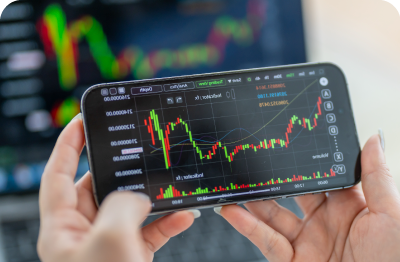
Brokers/Exchanges:
Intermediaries who ensure smooth execution and settlement
Important Option Trading Terms to Know
Option trading for beginners should start with understanding the terms that are thrown around when discussing options of trading. Here are some key terms:
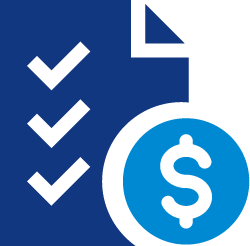 Extrinsic value (time value)
Extrinsic value (time value) Theta (time decay)
Theta (time decay)  Delta
Delta  Volatility (implied vs historical)
Volatility (implied vs historical) Risks and Rewards in Options Trading
Options trading has its rewards in the form of gains and premiums, but there’s also risks. Time decay, volatility, complex trading strategies and pricing can all raise concerns. There’s also leverage which heightens your exposure and risk.
But with the right tools and analysis, you can use options to hedge your portfolio, limit downside during volatile markets, and with strategies like covered calls, generate short-term income.
Options vs Other Trading Instruments
Here's a quick comparison of intrinsic vs extrinsic value in both stock and options trading:
| Point of Difference | Stocks | Leveraged Instruments | Options |
|---|---|---|---|
| Obligation | Direct ownership | No ownership/obligation | Right but not the obligation |
| Capital Requirement | Full stock price | Margin required | Only premium |
| Leverage | None | High leverage | Built-in leverage |
| Risk Profile | Loss limited to investment | Losses can extend | Premium loss for buyers; unlimited for sellers |
| Time Sensitivity | Can be held indefinitely | Expiry applies | Expiry and time decay |
| Use Cases | Long-term wealth building | Short-term opportunity use | Short-term gains, hedging, income generation |
Real-World Examples of Options Trading
Here are some examples to better understand what option trading looks like:
Mr. Z expects tech stock to rise ahead of earnings. Instead of buying shares, he purchases a call option with a strike price closer to the current market/target price. He pays a small premium for the contracts.
If the stock rallies, the option value surges and gives Mr. Z that percentage rise on exposure as profits. If the market tanks, he will lose the premium he paid to buy the contracts.
Writing is another term for selling a contract. Ms. C held 200 shares in the company. For short-term income generation, she writes a call option on the same shares and earns some money through premiums.
With these types of option trading strategies, where someone writes or sells a contract, the trader’s profits are capped, but losses in her options position are potentially unlimited.
A portfolio manager at a leading fund house fears there is a looming market correction. To safeguard their portfolio, they buy some put options at the comparatively small cost of premiums. If the market falls, their portfolio is protected, and if it doesn’t, they lose their premium.
Taxation of Options in the UAE
The UAE is one of the most favorable environments for traders. There is no personal income or capital gains tax. But option trading comes with other costs like brokerage fees, spreads, and overnight charges that UAE option traders need to be mindful about.
FAQs
Q1. What is the difference between call and put options?
A: The main difference between a call and a put option is the outlook. Call options are useful when you expect the prices of the underlying to rise. Put help when you have a bearish outlook.
Q2: Is option trading suitable for beginners?
A: Beginners should start option trading with a proper understanding of the market after thorough analysis. They should be cautious. It is best to start with trading demos.
Q3: Which platform is best for trading options?
A: The best option trading platform provides you with a smooth interface, analytical tools, and a seamless experience without stutters. With Century, you can use the reputed IBKR platform to trade in options.
Q4. Can I trade options on currencies, commodities, and indices?
A: Options contracts can have various instruments as their underlying. Other than stock options, participants can trade in index, currency, and commodity options.
Q5. What are the risks involved in option trading?
A: Without the right option trading strategies, risk is high in option trading. There are magnified losses due to leverage, time decay, and potentially unlimited losses for traders holding a naked sell position.
Conclusion
Option trading opens the door to not just amplified gains but to overall protection of your portfolio and risk management. From simple calls and complex straddles, you can utilize options to generate income from the market, no matter how bullish, bearish, volatile, or stagnant it is.
With the right trading platform, you can analyze and trade in the same space. With Century’s platforms, like the Century Trader App, and IBKR’s platform for options, your trading journey from a beginner to a pro will be smooth and secure.
لا تقدم شركة سنشري للإستشارات والتحليل المالي ش.ذ.م.م (الشركة) محتوى هذه المدونة، بما في ذلك أي أبحاث أو تحليلات أو آراء أو توقعات أو أي معلومات أخرى (يُشار إليها مجتمعةً باسم "المعلومات")، إلا لأغراض التسويق والتثقيف وإتاحة المعلومات العامة. ولا يُفسَّر ذلك على أنه نصيحة استثمارية أو توصية أو دعوة لشراء أو بيع أي أدوات مالية.
كما يجوز نشر هذه المعلومات عبر قنوات مختلفة، بما في ذلك موقع الشركة الإلكتروني، ومنصات الغير، والنشرات الإخبارية، والمواد التسويقية، ورسائل البريد الإلكتروني، ووسائل التواصل الاجتماعي، وتطبيقات المراسلة، والندوات الإلكترونية، وغيرها من وسائل التواصل. وبينما تسعى الشركة لضمان دقة المحتوى، فإنها لا تضمن اكتماله أو موثوقيته أو تحديثه في الوقت المناسب. وعليه، فأي قرارات تُتخذ بناءً على هذه المعلومات تكون على مسؤوليتك الشخصية. ولا تتحمل الشركة أي مسؤولية عن أي خسارة أو ضرر ناتج عن استخدامها.
ينطوي تداول المنتجات المالية على مخاطر كبيرة، بما لا يتناسب مع جميع المستثمرين. فيُرجى التأكد من وعيك التام بالمخاطر، وطلب الاستشارة المهنية المتخصصة إذا لزم الأمر.
يُرجى الاطلاع على بيان كشف المخاطر الشامل المتوفر على موقعنا الإلكتروني.


